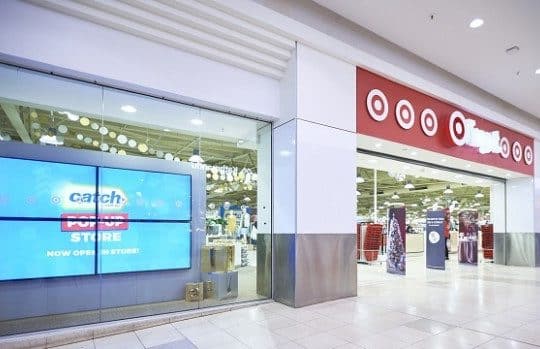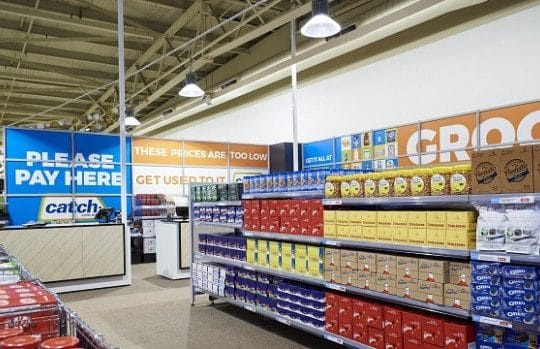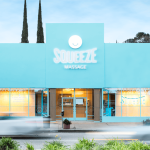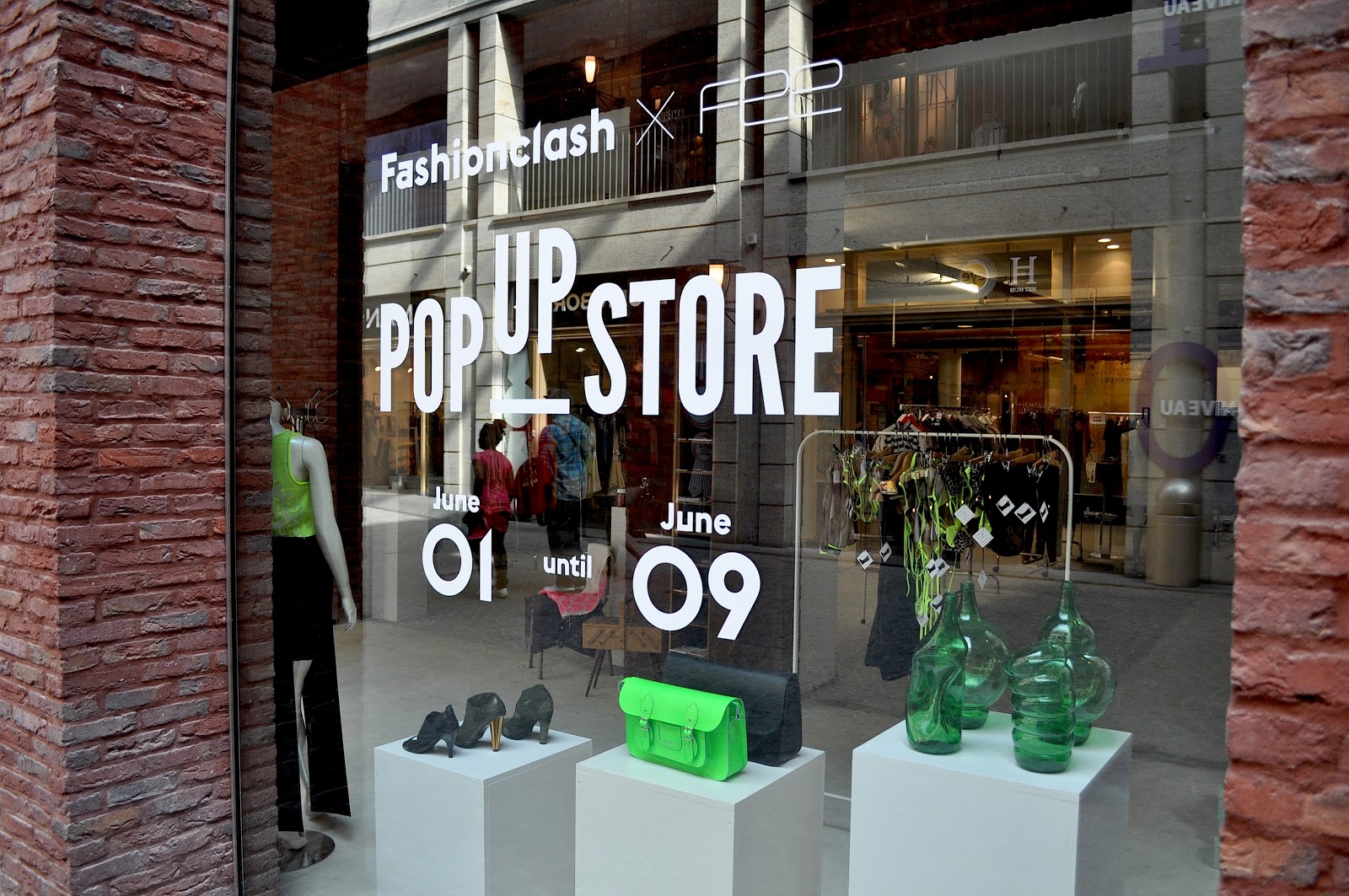
Why Pop-Ups Have Become the Best PR Tactic of the Decade
Pop-up shops and exhibits have become one of the greatest PR and marketing strategies of the decade. Through pop-ups, businesses are pulling people away from the screens for an interactive, exclusive event, or attraction, to share with their fellow followers. From kids ages 12-17 to 40+ year-olds who enjoy a fun attraction, pop-ups have been a great way to promote a new product or spread brand awareness.
Over the past decade, people have flocked to the next best pop-ups in their areas. Whether it be in one of the major U.S. cities, or in another country, people have bought plane tickets or driven miles just to attend the attraction. Companies have created immersive and exclusive experiences people cannot pass up. These experiences give people a temporary escape from the real world, allowing them to fully immerse themselves into the space and connect with the company.
Let’s take a look at what makes pop-ups the go-to PR strategy of the decade:
Fear of Missing Out (FOMO):
People hate the feeling of missing out on a great opportunity, especially Millenials and Gen. Z. They are all about “being part of the conversation” which means participating on the hottest trend aka the coolest pop-up around.
The fear of missing out aka FOMO is a major factor in pop-up shops. Building hype and seeing people talk about the pop-up causes people to travel long distances, wait hours in line, and immediately purchase tickets when the site goes live. No one wants to miss out on a great opportunity. When people know something will be a big hit, they want to be the first ones to post about it, or at least say they were able to participate in it.
Over the summer, Chase created a pop-up in New York City’s Seaport District with a fun bar, great views, and photo opportunity people couldn’t resist. The catch? You had to be a Chase Saphire cardholder in order to gain access. Cardholders brought friends and family to the pop-up, snapped photos to share on social media:
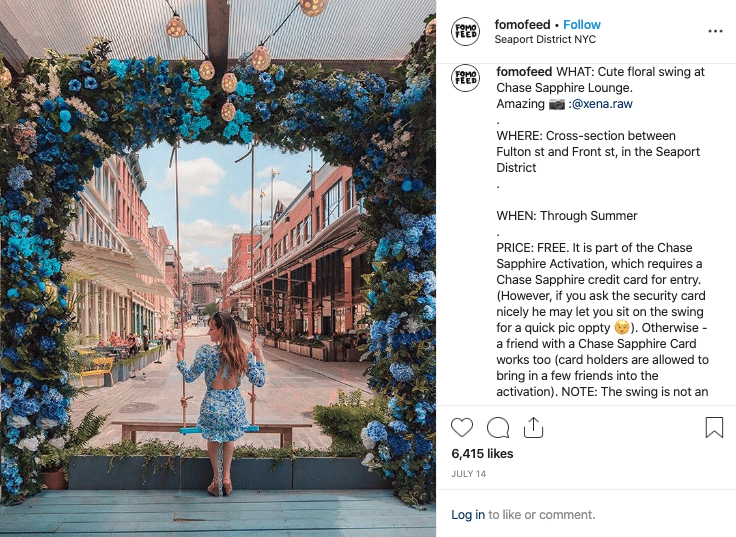
Chase was able to attract their existing customers, as well as potential customers to their website due to the attraction their pop-up received. With it being on a limited run (summer months), most people either applied for a card or asked someone who had one for access. This helped the company promote their product, as well as spread awareness of the exciting perks Chase has to offer.
Most pop-up experiences only run for a short amount of time, giving people a small window of opportunity and fear that they must attend it sooner than later. Typically, businesses will release tickets for purchase, which will quickly be sold out if the pop-up had gained traction before the sale date. Another tactic to instill FOMO is allowing free entrance between the hours the pop-up is open, which results in long wait times. Either way, businesses are becoming creative and feeding into their audience’s feelings to attract them to visit the pop-up and essentially spread any marketing message they see fit.
Increase: Brand Awareness, Website Traffic, & Sales:
Pop-ups are usually based around a new product or brand awareness. Businesses use pop-ups to spread word about a new venture their company is undertaking. They are a great way to educate people about any messaging a business would like to bring awareness to, in turn, increasing website traffic and sales.
According to IBM community, 71% of consumers are shopping online to find the best prices v. going to a brick-and-mortar store. This has significantly impacted the number of people who shop in stores due to online shopping popularity. Pop-ups have helped pull people away from behind computer screens and back into the world to help businesses keep their doors open.
Creating a pop-up based on a new product or to spread a company message is a great way to lure people into stores. It helps increase sales as well as drive traffic onto the main website for those who may be unable to attend or are curious to find out more about the event.
Catch, an online retailer, opened a pop-up shop inside Target Australia. This helps bring people who are Catch customers into Target stores, giving them a chance to shop around and discover what Target has to offer. Having Catch inside Target is a great way to bring awareness and sales to both brands. Target and Catch both have links to one another, driving traffic to each other’s website for those who are curious for more information regarding the collab, spreading brand awareness, and increase revenue.
Target Highpoint, Victoria store. Catch sign showing customers where to pay inside Target. Catch pop-up inside Target.
Using a pop-up shop to spread brand awareness is a great way to get people to learn more about the company. People are able to interact with company representatives at the pop-up, bringing back the element of human interaction that is lost when shopping online. Customers are able to ask questions as well as participate in an interactive experience the company puts together. For those that are unable to attend or would like to learn more, the company website or social media handles are great sources of information. As creatures of habit, once people are on a website and see great deals or exclusive offers (based around something related to the pop-up), they are inclined to purchase, which increases sales.
Social Media Booster:
When creating a pop-up, businesses think about fun, adventurous, over-the-top, social-worthy experience for potential customers. As they should! Pop-up shops have become a social media-worthy scene where people flood to the location to snap the perfect picture.
Sharing photos on social media is the equivalent of paying to promote business ads online, but this way is free. Social sharing has exponentially driven the pop-up craze this decade. Everyone needs to be part of the hype, causing more and more potential customers to a business’s pop-up. This helps create such hype, businesses are opening more pop-up shops and experiences around the world.
Almost every major city world-wide has one pop-up going on. Whether it be retail or art, people are attracted to sharing their experience online. This helps businesses significantly increase their social media presence. How? By encouraging people to “tag” or use the hashtag associated with the pop-up, often allowing the business to repost the photo on their own social media account. This allows businesses to gain exposure, as well as the user.
Influencers and non-influencers are always looking for more exposure online in hopes to get their profiles in front of a wider audience. Tagging the company, location, or using the pop-up’s hashtag gives them hope the company will repost or use their photo. This helps increase the company’s reach. The person’s followers are inclined to check out the tags and hashtags used, potentially leading them to attend the pop-up itself and continue on in the “tagging” cycle.
The typical PR tactics used 10 years ago are still used today. While still somewhat effective, businesses have had to think of different ways to keep things fresh. Pop-up shops and experiences have become the go-to way of promoting new products or spreading brand awareness, serving as a new PR tactic.
Using these exclusive interactive stores or exhibits has proven to be successful over the past decade. Instead of issues the normal press release and doing media outreach, companies have opted to create a fun experience through a pop-up shop. This gives customers and potential customers the opportunity to participate in a limited-time experience, feeding into FOMO, driving immediate traffic to the site. The spike in website traffic helps increase revenue, giving businesses a great return on investment (ROI) from organizing the pop-up. Because pop-ups are social-media heavy, companies are also inclined to see a significant increase in their social following. With these great benefits, businesses have chosen to participate in the pop-up craze, stepping up their PR game.
